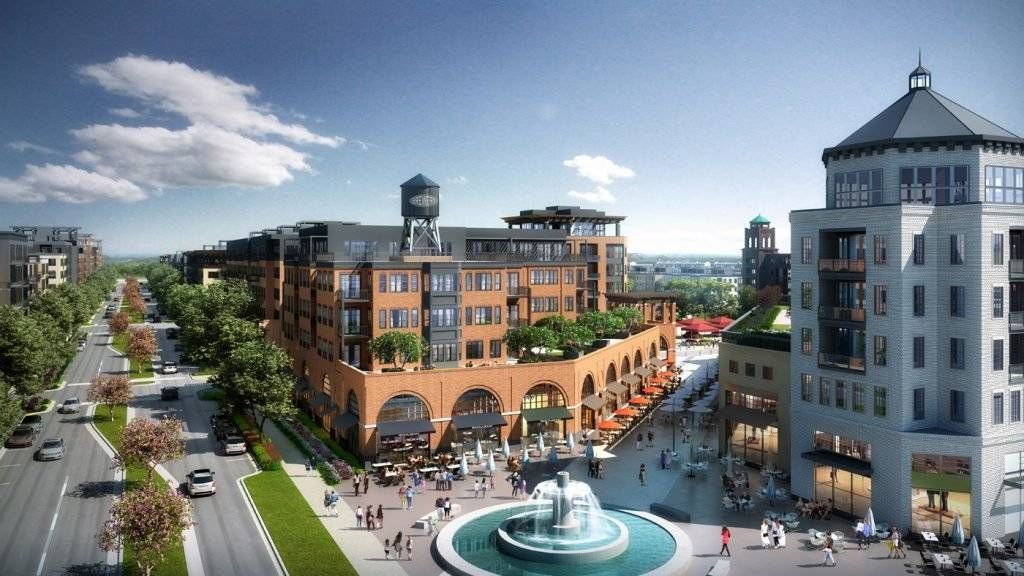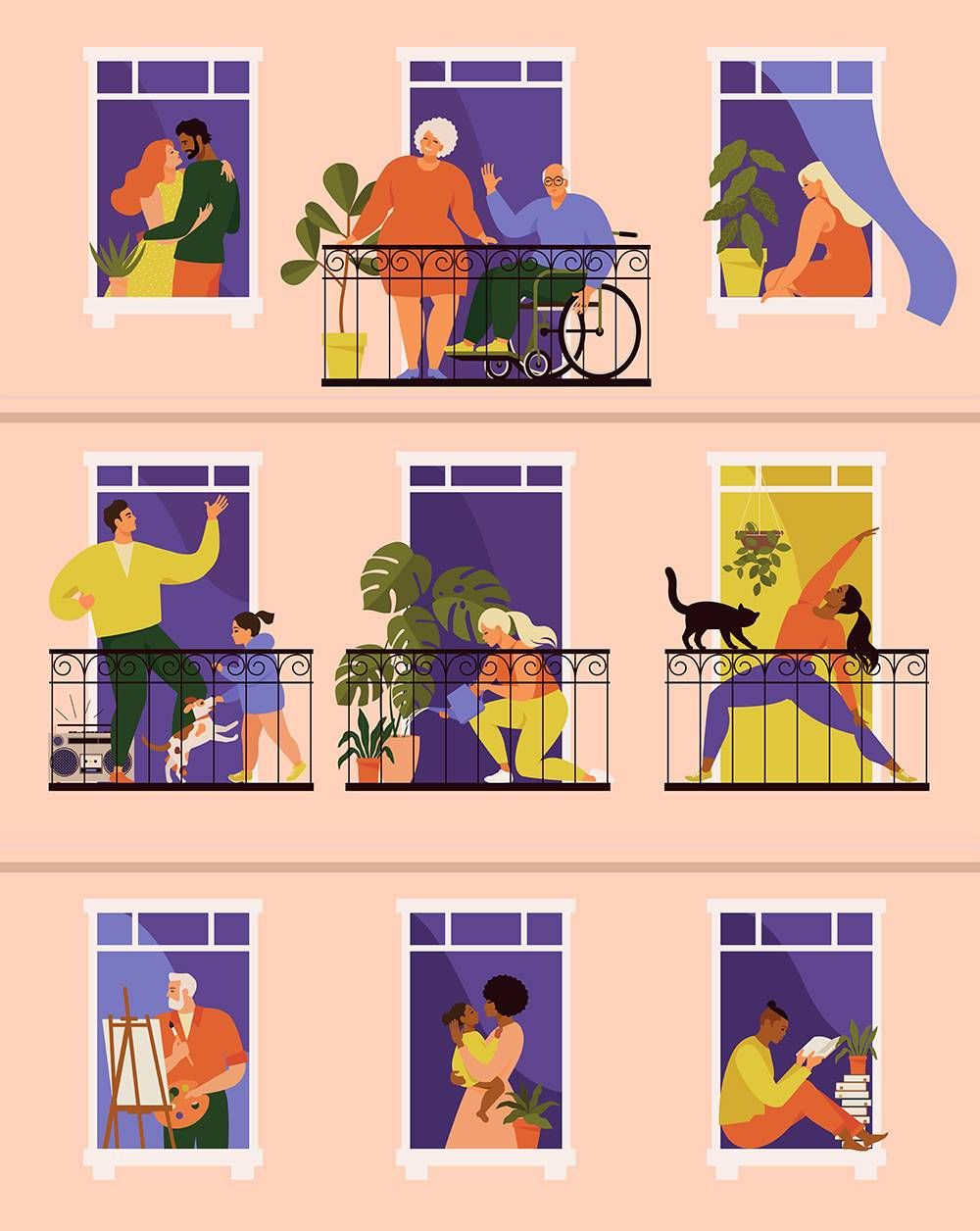How Discussions of 'Neighborhood Character' Reinforce Structural Racism
Racial covenants aren't enforceable by law anymore, but they're de facto.

When the city of St. Paul, Minnesota, proposed developing apartment buildings and retail space on an empty industrial site, an opinion piece in Growler Magazine compared the proposed development to a metal shredder.
"Rather than conserving and improving the neighborhood's qualities and characteristics," Charles Hathaway writes. "The redevelopment endorsed by the city's plan disregards the neighborhood's unique characteristics and diminishes its quality."
The site has sat empty in St. Paul's Highland Park neighborhood since the 86-year-old Ford Motor Company Assembly Plant closed a decade ago.
Developer Ryan Companies purchased the site, with plans to build 3,800 housing units, 20 percent of which will be designated affordable housing.
But opponents say development would ruin the "character" of the neighborhood, a place they say has a small town feel amid a mid-sized city.
This isn't just a common phrase; it's literally written right into the language of the city's zoning code for conditional use:
"The use will not be detrimental to the existing character of the development in the immediate neighborhood or endanger the public health, safety and general welfare."
But what counts as "neighborhood character," and who gets to define it?
In many cities, it's wealthy, white homeowners who have lived there for decades.
"A common tactic is to use zoning for single family homes or large lot zoning that requires the single family homes to have a significant amount of land around the structure," said Lance Freeman, a professor at the Columbia University Graduate School of Architecture, Planning and Preservation.
"Things like that make it difficult to construct multifamily housing. So clearly that would serve to keep out certain types of housing that would be more affordable."
Racist zoning laws
Zoning laws in the United States have a racist history. The earliest weren't just implemented to control land use, but also for social control, an effort to keep wealthy neighborhoods from becoming slums.
Though they were intended to improve the environment, they were also used to keep out "undesirables," namely poor people, people of color and immigrants.
While wealthy communities were able to use zoning to their advantage — preserving their property values, and controlling development of schools and businesses, poor communities of color are often burdened by what's called "expulsive zoning," living next to industrial and hazardous waste sites and landfills, and without access to public parks and grocery stores.
We don't just see this in St. Paul. We also see it in cities like Charleston, South Carolina, which is facing an affordable housing crisis but has blocked further development in the center of the city, in the name of historic preservation.
Last year, St. Paul's neighbor, Minneapolis became the first major city to end single-family housing restrictions, instead allowing multi-family housing to be built anywhere in the city.
But across the river in St. Paul, the battle over density is still happening.
What's considered 'character?'
Tom Basgen, 32, is a renter in St. Paul who has been going to public meetings about the former Ford plant site for a decade. He's lived in the city since 2009.

"They couldn't say, you know, this is Highland Park. We don't want poor people living here," he said.
"They would say, how will this affect the character of our wonderful neighborhood? And it is a wonderful neighborhood. My contention was that as a renter now and a renter then, you know, I like to think I pick up trash, I contribute to that good character of the neighborhood."
Basgen said there's a belief that renters are tumbleweeds, just blowing through a neighborhood with no real commitment to it.
But with rising home prices and stagnant wages, homeownership is increasingly out of reach for many Americans. There are more U.S. renters today than there have been at any point since at least 1965.
In St. Paul, most residents are renters.
But the voices in community meetings are often long time homeowners.
Many homes in the Highland Park neighborhood were historically bound by racial covenants, as Michael Daigh writes for Streets.mn, barring people of color from purchasing them.
Racial covenants haven't been enforceable for decades. But it doesn't mean they didn't have a lasting effect on what we consider "character."
"If a Baby Boomer purchased their Highland home 30 years ago, it is a statistical likelihood that they purchased in the 1980s from another longtime resident who intentionally bought a home that was 'protected' by racial covenants," Daigh writes.
"...It is also reasonable to surmise that, in the twilight of legal racial covenants, homeowners still made intentional choices about whom they sold to."
Representation for renters
There is change happening in St. Paul. Basgen worked to elect Mitra Jalali to the St. Paul City Council two years ago.
Basgen and Jalali have been described as YIMBYs ("Yes in my backyard") for fighting the neighborhood's NIMBYs ("Not in my backyard").
Historically, renters haven't had a voice in St. Paul. Jalali made headlines as the first renter and youngest member on the council.
"People who use coded language like 'neighborhood character' and 'historic preservation' are participating in structural white supremacy that has historically and presently mostly valued white 'character' and white 'history' at the expense of everyone else," Jalali said.
"We don't need to discard maintaining historic significance or physical structures in our city, but we do need to discard blocking any and all positive change in the name of one narrow segment of the population's definition of 'history' and 'character.'"
Jalali recently pushed to rezone another area of the city to allow three-story apartment buildings, saying the move would benefit public transit, young people and people of color.
She said the city needs to take a racial equity lens to all urban planning, land use and engagement decisions going forward, to empower communities of color who have been disproportionately affected by racist urban planning. And she says there's more St. Paul could do to improve and expand its zoning code, like eliminating parking minimums.
Last week, the St. Paul City Council passed a set of renter protections that included limiting security deposits to one month's rent. The protections also require landlords to provide written justification when they do not renew a tenant's lease.
"I think the bellwether of whether this fight is over," Basgen said. "Is whether or not we have homeless people in this town."

This article originally appeared on Rewire.
© Twin Cities Public Television – 2020. All rights reserved.
Saint Paul's neighborhoods of color have a disproportionate number of vacant buildings than areas primarily occupied by white residents. That fact has a direct impact on crime rates, public-health risks and quality of life. Data reporter Kyeland Jackson examines the links between vacant properties and the city's racial disparities.
Along with other urban centers across the country, the Twin Cities have a history of racially discriminatory housing covenants that prevented people of color from buying homes in certain neighborhoods. That history ripples in the present-day affordable housing crisis: By limiting opportunities for home ownership, people of color were stripped of one key way to build equity over time. Discover more in "Mapping the Roots of Housing Disparities in Minneapolis."
When Twin Cities PBS Producer Kevin Dragseth was a teenager, he was mesmerized by the Living Colour song "Open Letter (To a Landlord)." Years later, the song impacted his documentary Sold Out: Affordable Housing at Risk. Aiming to learn more about the song's origins, he reached out to one of the songwriters, Tracie Morris, who sheds light on the roots of the New York City housing issues it addresses.
